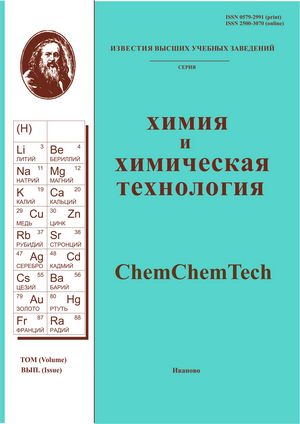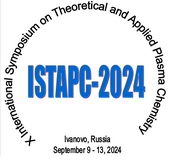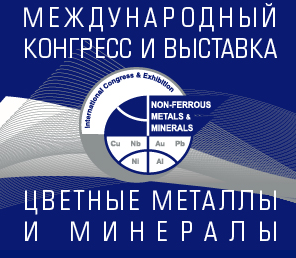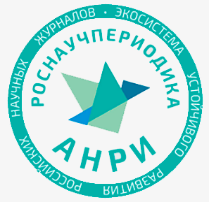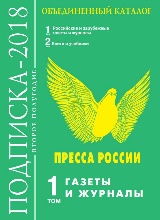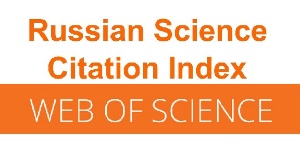УСОВЕРШЕНСТВОВАНИЕ ТЕХНОЛОГИИ ПОЛУЧЕНИЯ УГЛЕРОДНОГО ХИМПОГЛОТИТЕЛЯ АММИАКА
Аннотация
Настоящая работа посвящена исследованию зависимости свойств химпоглотителя аммиака от условий его синтеза. В качестве носителя химпоглотителя использовали гранулированный активный уголь АГ с предельным объемом сорбционного пространства 0,512 см3/г и объемом микропор 0,414 см3/г. В качестве активной по отношению к аммиаку добавки выбрана соль – сульфат меди (II). Образцы химпоглотителя получали путем импрегнирования углеродного носителя горячим раствором активного компонента. Пропиточный раствор готовили двумя методами-традиционным, растворяя навеску соли в горячей воде, и с применением ультразвуковой обработки. Установлено, что с увеличением общего содержания CuSO4 в поглотителе до 9 % масс. доля связанной меди уменьшается, однако при содержании выше этого значения доля связанной (неактивной) формы меди (II) в химпоглотителе практически не изменяется. Наличие на поверхности активного угля кислородсодержащих функциональных групп основного характера приводит к взаимодействию их с ионами меди (II) пропиточного раствора и дезактивирует их по отношению к аммиаку. Показано изменение характера пористой структуры химпоглотителя при внесении активной добавки сульфата меди (II) на поверхность активного угля АГ от условий приготовления пропиточного раствора и скорости сушки полупродукта. Проведены исследования по использованию ультразвука в процессе приготовления раствора сульфата меди, применение которого приводит к формированию на поверхности носителя кристаллитов активной добавки значительно меньших размеров (1–5 нм) по сравнению с термическим методом приготовления раствора (8–12 нм). Емкость химпоглотителя по аммиаку при этом возрастает в 3,5–4,5 раза.
Литература
The list and codes of the substances polluting free air. SPb.: OAO «NII Atmosfera», 2015.527 p. (in Russian).
Pashkovsky P.S., Zhiltsov A.N., Zhiltsov N.P. Formation of vapors of ammonia at the emergency emissions. Nauch. Vestn. NIIGD Respirator. 2017. N 2 (54). P. 51-58 (in Russian).
Koshelev V.E., Tarasov V.I. Just about not prime in use of means of protection of respiration. Perm: Stil-MG. 2007. 280 p. (in Rus-sian).
Olontsev V.F., Olontsev V.V. Scientific bases of creation of the filtering gas masks. Perm: Perm Сentre for scientific and technical information. 2005. 177 p. (in Russian).
Gorshunova V.P., Spiridonov B.A., Fedyanin V.I. An ammonia sorption the porous adamant modified by nanoparticles of some transitional metals. Vestn. VGTU. 2009. V. 5. N 12. P. 136-137 (in Russian).
Gorshunova V.P., Khaustova M.M. Ammonia sorption research silica gels of different porosity. Vestn. VGTU. 2010. V. 6. N 11. P. 19-21 (in Russian).
Bandosz T.J., Petit C. On the reactive adsorption of ammonia on activated carbons modified by impregnation with inorganic compounds. J. Colloid Interface Sci. 2009. V. 338. N 2. P. 329-345.
Petit C., Karwacki C., Peterson G., Bandosz T.J. Interactions of Ammonia with the Surface of Microporous Carbon Impregnated with Transition Metal Chlorides. J. Phys. Chem. 2007. V. 111. N 34. P. 12705-12714.
Glushankov K.V., Farberova E.A., Kobeleva A.R. Research of impact of process of drying of the Kupramit absorber on its activity. Theses of reports XVIII region. scient. pract. conf. students and young scientists "Chemis-try. Ecology. Biotechnology – 2016". Perm: Publishing house PNIPU. 2016. P. 89-90 (in Russian).
Glushankov K.V., Kobeleva A.R., Farberova E.A. The impact of ultrasonic processing on properties of the absorber of the ammonia intended for individual protection equipment of respiratory organs. Theses of reports Russ. scient.pract. conf. young scientists, graduate students, school and university students "Chemistry. Ecology. Urbanistics". Perm: Publishing house PNIPU. 2017. P. 472-476 (in Russian).
Olontsev V.F., Minkova A.A., Generalova K.N. Nanoporous carbon fibrous adsorbents and chemisorbents for application in the sorption and ecological equipment. Vestn. Perm. Nats. Issled. Politekhn. Un-ta. Khim. Tekhnol. Biotekhnol. 2013. N 1. P. 179-190 (in Russian).
The active carbon. Elastic sorbents, catalysts, dehumidifiers and chemical absorbers on their basis: The catalog. Ed. by V.M. Mukhin. M.: Izd. dom «Ruda i metally». 2003. 280 p. (in Russian).
Farberova E.A., Tingaeva E.A., Kobeleva A.R. The absorber of ammonia and hydrogen sulfide on the basis of the fissile coals and a research of its properties. Butlerov. Soobshch. 2017. V. 50. N 6. P. 41-47 (in Russian).
Farberova E.A., Tingaeva E.A., Kobeleva A.R. Technology of producing activated carbons and their application. Perm: Publishing house PNIPU. 2018. 148 р. (in Russian).
Tarkovskaya I.A. The oxidized coal. Kiev: Naukova dumka. 1981. 197 p. (in Russian).
Collection of methods for determining the concentrations of pollutants in industrial emissions. L.: Hydrometeoizdat. 1987. 272 p. (in Russian).
Soldatov A.I. Structure and properties of a surface of carbon materials. Vestn. Chelyab.Gos. Un-ta. 2011. N 1. P. 67-71 (in Russian).
Belyayevа O.V., Krasnova T.A., Semyonov S.A., Glad-kova O.S. Interaction of O2, O3, H2O2 with an absorbite. Khim. Tverdogo Topliva. 2011. N 6. P. 61 - 69 (in Russian).
Gerasimov D.V., Suchkova E.P. Theoretical bases of application of ultrasound for processing of food systems for the purpose of regulation of maintenance of the bio-logically fissile components. Nauch. Zhurn. NIU ITMO. Ser. Prots. App. Pishch. Pr-va. 2014. N 3. P. 53-60 (in Russian).
Myasnikov S.K., Chipryakova A.P., Kulov N.N. A kinetics, power characteristics and an intensification of crystallization processes at a chemical deposition of ions of a rigidity. Teor. Osnovy Khim. Tekhnoli. 2013. V. 47. N 5. P. 1-20 (in Russian).
Frolov V.V., Mozgovoy I.V. An ultrasonic intensification of chemical processes in a stream. Tekhnich. Nauki – ot Tteorii k Praktike. 2013. N 24. P. 117-121 (in Russian).

